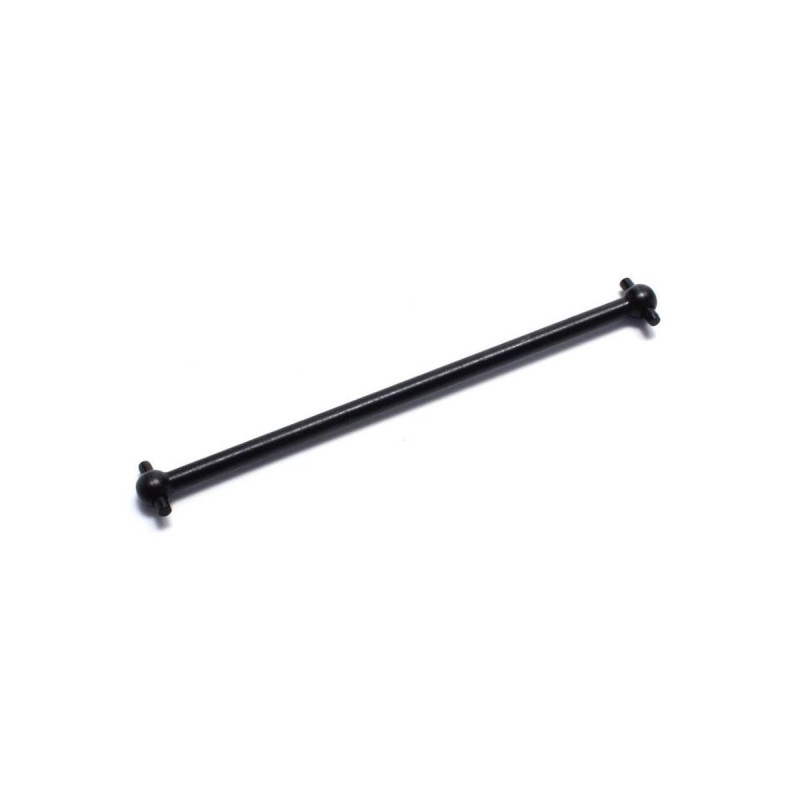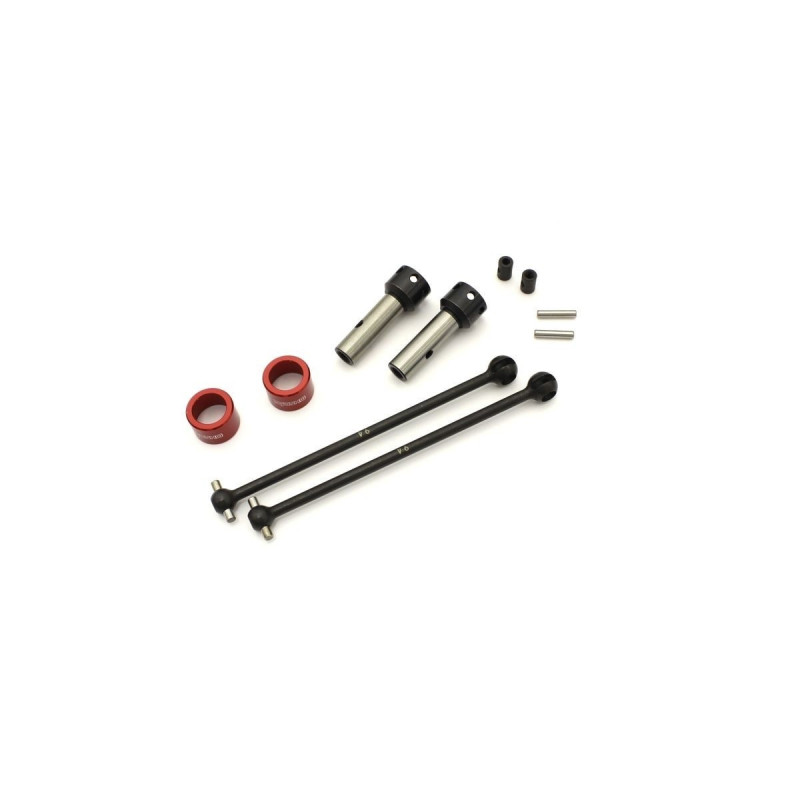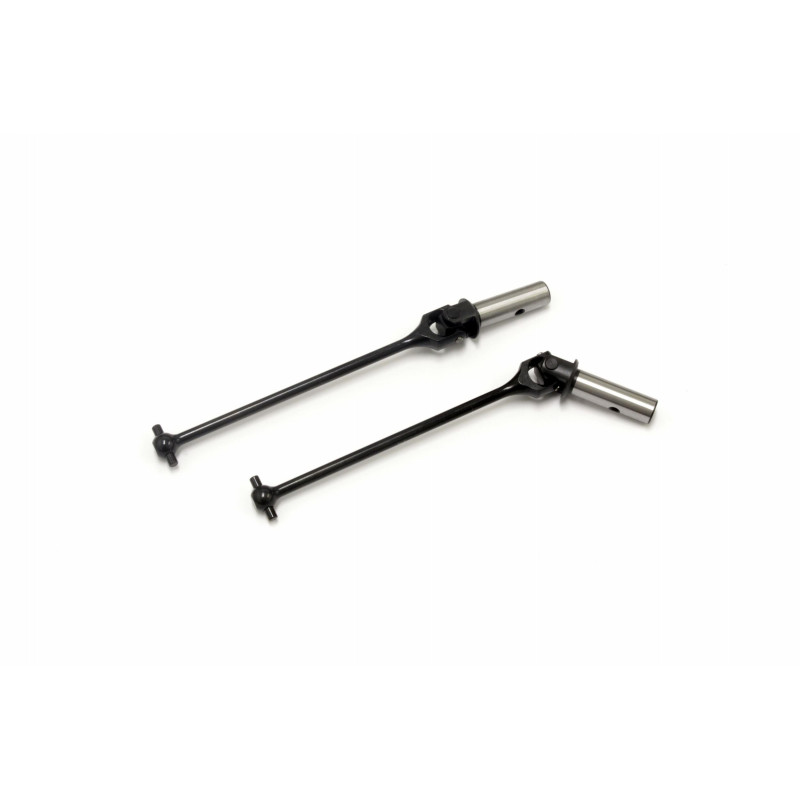Quick tutorial #10: Driveshafts comparaison for your RC Car
For a little while now, you see me not using the universal driveshafts in the center line or for the suspension of my Kyosho buggys MP10 TKI2 and MP10e? Why?
VIDEO
Let's see now what are the advantages and drawbacks of all driveshaft types.

At the center, the use of the MA081, IFW617 and IFW616 dogbone shafts allows for a more direct transmission and less power loss.
This solution is simple and efficient with few moving parts, little friction, and therefore limited wear.
If you use a dogbone shaft only at the rear or at the front, you will directly impact the power distribution on one drivetrain or the other, changing the overdrive effect of your car. For example, using a dogbone shaft only at the rear will give more push on the rear and a less "front wheel drive" effect, and vice versa.
At the wheels, I use CVD shafts reference IFW613 on my MP10 TKI2 and MP10e, front and rear.

The use of the original drive shafts makes the car smoother and easier to drive.
However, this universal driveshaft does not have the same shaft speed at the input and output. Indeed, if the shaft is aligned, the wheel will turn at the same speed as the differential outdrive.

But if you apply an angle to the shaft, the wheel will not spin at a constant speed, but will accelerate and slow down during a rotation. It happens very quickly, so you may not see it with the naked eye, but it can create vibrations and impact the driveability of your car.
CVD (constant velocity driveshaft) type driveshafts don't have this disadvantage and the wheel speed is constant no matter what angle the drive shaft takes.
Unfortunately, this is not quite the case either, and the closest type of drive shaft is a double-jointed drive shaft.
Using CVD or CVA driveshafts results in a more responsive, precise and efficient car.
In the front:
The use of this option in fhe front gives a more responsive car with a more reactive feel.
The traction in the front is increased and the car will have more steering.
If you prefer a soft steering, or if the track is high grip, you should prefer the unversal shafts.
In the back:
At the rear, this is where the use of CVD shafts on your car will have the most impact.
Indeed, the other important point of a CVD type shaft is that at high speed, it will tend to align itself.
The suspension never beeing flat, in up or down travel, the driveshaft forming an angle will apply a force on the suspension.
Your car will be stiffer, and will be more likely to stay flat under acceleration.
In fully uptravel (after a jump for example), if you accelerate, this force will push the wheel towards the ground, and stiffen the suspension.
Your car will therefore lose less speed.
The main drawback of this solution is that by stiffening the suspension, you will also prevent the suspension from doing its job properly, and it will not absorb the bumps of the track as well.
So I advise to use CVD shafts in conditions where the track is slippery and/or flat.
As soon as the track has a lot of grip or holes, the universal shafts will give you more comfort and an easier to drive car.
Don't be mistaken, the transmission, whether in the center or at the wheels, have a very important impact on the behavior of your car.
I invite you to test these different solutions and find your comfort zone.
See you soon for a new episode!
The Shark
Reno Savoya
Share this content
